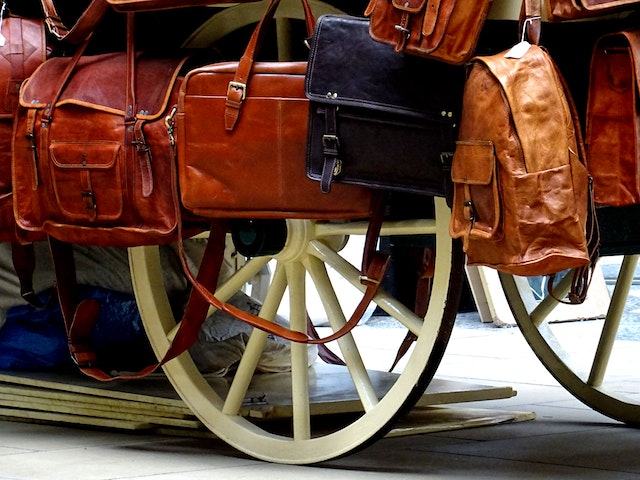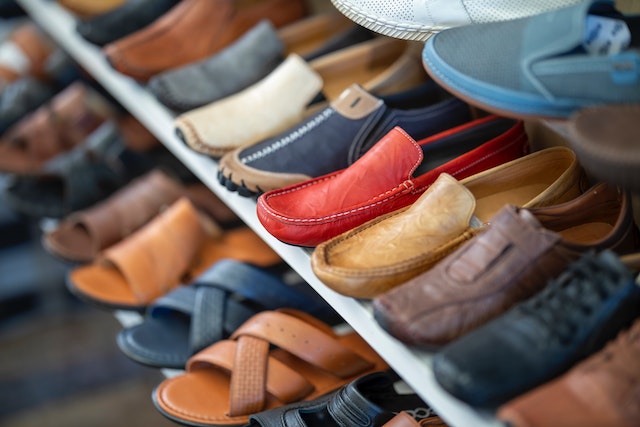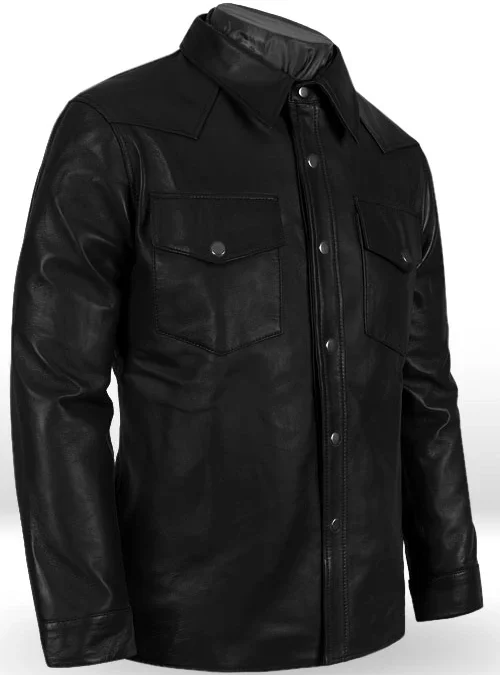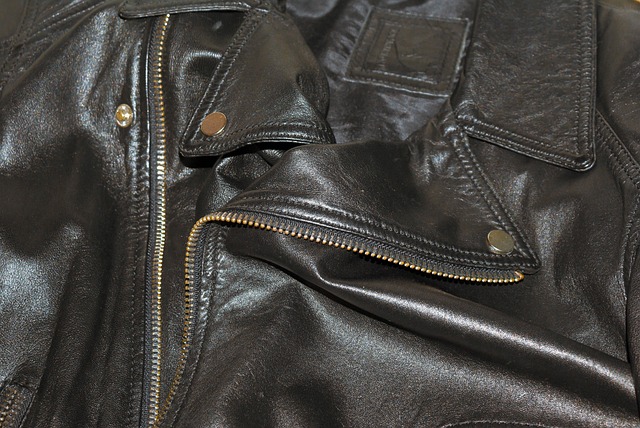
by Leather | Leather Questions |
Have you heard of aniline leather? It’s used in the construction of countless products, some of which include jackets, purses, belts, wallets and even furniture. Like all leather, aniline leather consists of animal hide. It’s made by tanning and processing animal hide. But aniline leather is a specific type of leather that’s distinguished from all other types. Overview of Aniline Leather Aniline leather is a type of real leather that receives its color from a particular type of soluble dye. Known as an aniline dye, it dictates the color of aniline leather. All aniline leather is exposed to aniline dye during production. After soaking up the aniline dye, its color will change. Leather has a soft brown color by default. You can find leather, however, in other colors besides soft brown. Some of the alternative colors in which leather is made include black, red, white and even green. To achieve an alternative color, leather is dyed. Aniline leather is dyed using aniline dye. The Aniline Dyeing Process Different manufacturers use different dyeing aniline dyeing processes, but they all involve submerging real leather into a bath of water and aniline dye. Aniline dye is soluble. Soluble, of course, means that it dissolves in water. To produce aniline leather, manufacturers fill a container with water and aniline dye, after which they submerge the leather in this solution. Real leather is porous. If you examine it under a microscope, you’ll notice that it has many small and shallow holes on the surface. These holes allow real leather to absorb moisture, including aniline dye. It will soak up the aniline dye so that...

by Leather | Leather Questions |
When researching the different types of leather, you may stumble upon nubuck. It consists of animal hide that’s been tanned and processed — just like all other types of leather. Nubuck leather, however, features a napped surface that looks and feels like suede. It’s commonly used to make leather shoes and other leather accessories. Below are nine facts about nubuck leather, some of which may surprise you. #1) Classified as Top-Grain Leather Nubuck leather falls under the category of top-grain leather. Leather, of course, is often categorized according to its quality or grade. There’s top-grain leather, followed by split leather and then bonded leather. Top-grain leather contains the outer layer of the hide, which is known as the grain. It’s stronger, more durable and typically thicker than other types of leather. Split leather, in comparison, features a split grain layer. The grain layer is separated from the hide. Nubuck leather contains the outer layer of the hide, and since it’s not separated, nubuck leather is classified as top-grain leather. #2) The Grain Layer Is Sanded To produce nubuck leather, manufacturers sand or buff the grain layer. They leave the grain layer intact without separating it, but manufacturers will either sand or buff the grain layer to achieve a napped surface. One of the defining characteristics of nubuck leather is its napped surface. Other types of leather typically feature smooth texture. Nubuck leather is different in the sense that it features a slightly fuzzy, napped texture. When running your hands over napped leather, you’ll feel this napped surface. It’s similar to suede, with both materials featuring a fuzzy texture that...

by Leather | Leather Questions, Leather Shirts |
Can’t seem to choose between a leather shirt and a leather jacket? With a leather shirt jacket, you’ll experience the best of both worlds. Leather shirt jackets are popular among men and women alike, so they offer many of the same benefits as traditional leather garments. But leather shirt jackets feature a unique design that distinguishes them from the rest. What is a leather shirt jacket exactly, and why should you wear one? Overview of Leather Shirt Jackets A leather shirt jacket is a hybrid garment with characteristics of both a leather shirt and a leather jacket. Also known as a shacket, it’s thicker than a leather shirt but thinner than a leather jacket. You can find leather shirt jackets in different colors. Some of them are black, whereas others are brown or beige. You can also find them in different types of leather. As their name suggests, all leather shirt jackets are made of leather. But the specific type of leather from which they are made may vary. Regardless of color or leather type, though, leather shirt jackets feature characteristics of both a leather shirt and a leather jacket. They are thicker than a leather shirt but thinner than a leather jacket. Leather Shirt Jackets vs Traditional Leather Jackets They may look the same, but leather shirt jackets are different than traditional leather jackets. Leather shirt jackets feature a thinner construction. And because they are thinner, leather shirt jackets weigh less than traditional leather jackets. Leather shirt jackets are hoodless. In comparison, traditional leather jackets may or may not feature a hood. There are still plenty of similarities...

by Leather | Leather Questions |
When researching the different types of leather, you may come across vegetable-tanned leather. It’s become a popular alternative to chrome-tanned leather. Vegetable-tanned leather is used to make everything from handbags and belts to jackets, vets and other leather garments. What is vegetable-tanned leather exactly? To learn more about this popular type of leather, including the benefits it offers, keep reading. Overview of Vegetable-Tanned Leather Vegetable-tanned leather is any type of leather that’s processed with vegetable-based tanning agents. All leather must be processed during production so that it doesn’t spoil. Known as tanning, it’s essentially what distinguishes hides from leather. Animal skin hides must be tanned to become leather. Tanning involves bathing or otherwise exposing animal skin hides to preservative chemicals or compounds. As the animal skin hides soak up these chemicals or compounds, they turn into durable, long-lasting leather. Vegetable-tanned leather is characterized by the use of vegetable-based tanning agents. How Vegetable-Tanned Leather Is Made While there are different ways to make it, most vegetable-tanned leather is processed with tannins. Tannins are vegetable-based tanning agents. They occur naturally in many plants and trees. Tannins are bitter-tasting astringent compounds. They are used in a variety of applications, one of which is the production of leather. Most vegetable-tanned leather is processed with tannins. During production, animal skin hides are submerged in a bath of tannins. They are left in this bath for several weeks or even months. When finished, the animal skin hides are removed from the tannin bath. Manufacturers will further dry out the animal hides, after which they will sell or use them as vegetable-tanned leather. Regardless, the term...

by Leather | Leather Questions |
Leather requires maintenance. Whether it’s a leather jacket, leather trousers or any other leather garment, you’ll need to maintain it. Real leather, for instance, can dry out. As moisture evaporators out of its pores, it will become drier and less supple. And if leather becomes too dry, it may eventually crack open. You can protect your leather garments from dryness-related damage such as this by hydrating them with an oil. There are several different types of oils that you can apply to leather garments. Oils are designed to hydrate leather while simultaneously creating a barrier of protection over the surface. Many oils will also add a lustrous sheen to leather. You should choose the right type of oil, however. Below are some of the most common types of oils used on leather, all of which are excellent choices. Mink Oil Mink oil is a popular choice for leather garments. Derived from mink fat, it features a high concentration of palmitoleic acid and unsaturated fatty acid. With these compounds, it can hydrate leather. You can apply mink oil by rubbing it into the surface of a leather garment. Leather is porous. Therefore, it will absorb the mink oil. The mink oil will soak into the leather’s pores where it’s able to hydrate and protect your leather garment from dryness. As a side benefit, it will also leave your leather garment feeling soft. Mink is commonly used for conditioning purposes. It can condition leather by making it feel softer. Coconut Oil Some people use coconut oil on their leather garments. Also known as coconut butter, coconut oil is derived from the...

by Leather | Leather Questions |
Enzymes play an important role in the production of leather. From leather jackets and vests to skirts, dresses, belts and more, nearly all leather products are exposed to enzymes during production. Leather consists of animal hide. There are different types of leather. Some types are made of sheepskin, whereas others are made of goat or cowhide. During production, however, manufacturers will expose the animal hide to enzymes. What are enzymes exactly, and how are they are used in leather? The Basics of Enzymes Enzymes are defined as catalytic proteins, meaning they trigger or accelerate chemical reactions. Research has shown that they are able to catalyze over 5,000 types of reactions. While other substances can trigger or accelerate chemical reactions as well, enzymes specifically trigger or accelerate chemical reactions in biological cells, such as animal hide. Animal hide is the foundation of all types of leather. With that said, leather doesn’t consist of raw animal hide. To convert animal hide into leather, manufacturers must process it. Leather processing includes multiple stages. One of the first stages of leather processing is preparing the animal hide for tanning, which includes bathing it in an enzyme solution. The enzymes used in leather production exhibit specific properties. They typically hydrolyze compounds like elastin and casein, for instance. As a result, enzymes can break down certain parts of animal hide. Manufacturers, though, must choose enzymes that are safe for leather. The enzymes used in leather production must not break down or otherwise damage collagen or keratin. Animal hide typically contains collagen and keratin. If broken down, it may become weaker. How Enzymes Are Used in...








Recent Comments